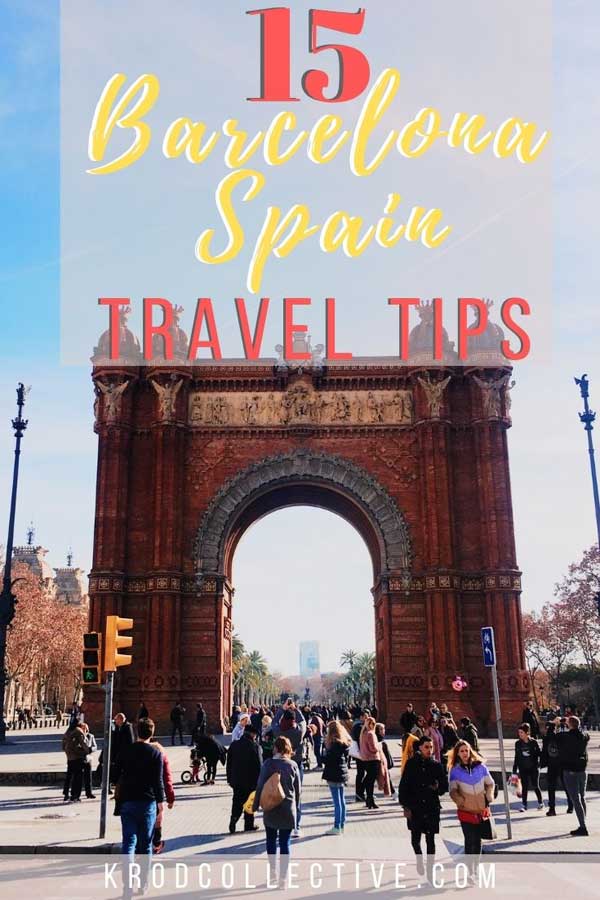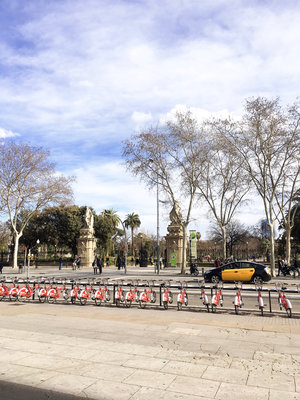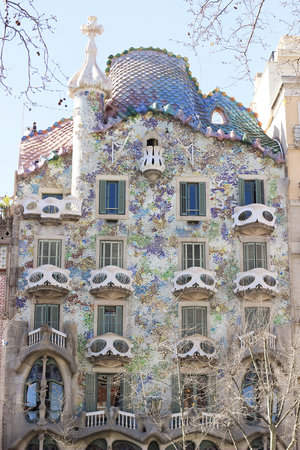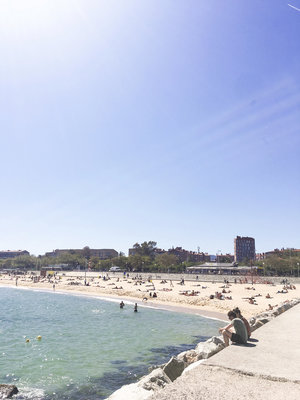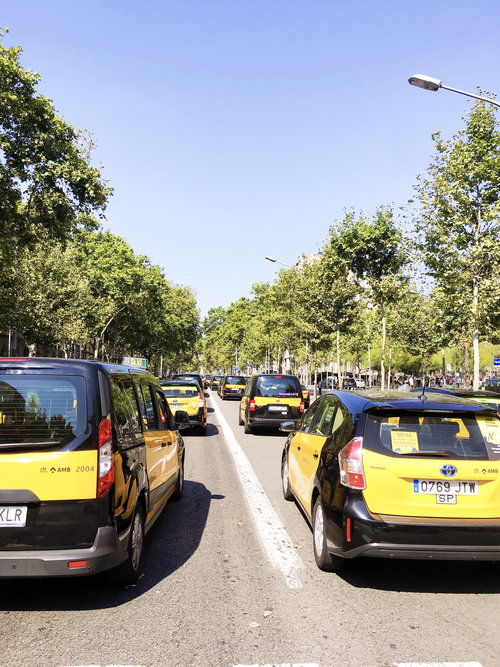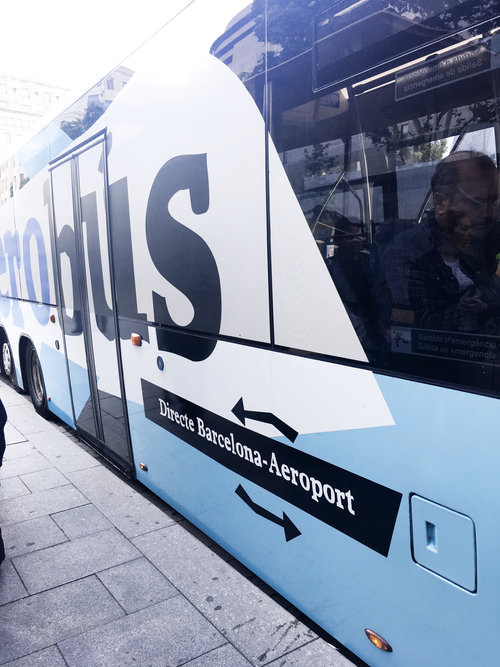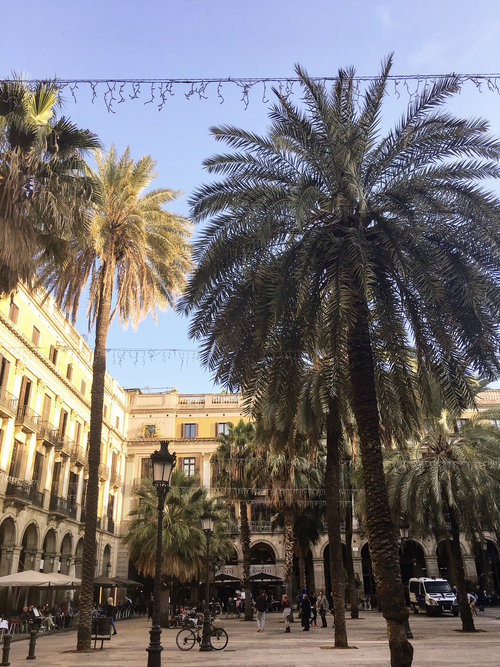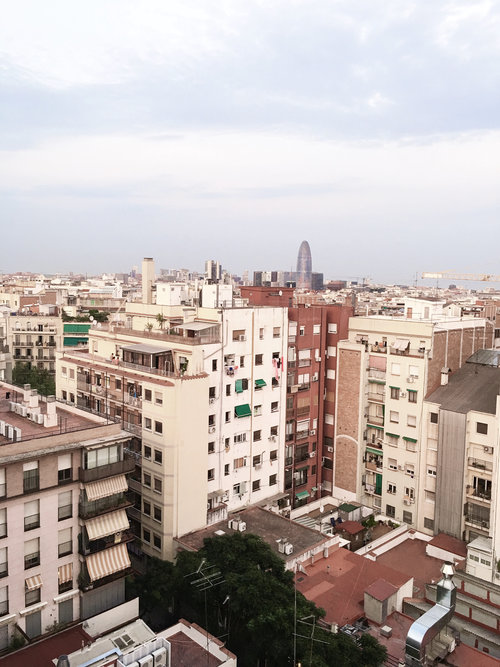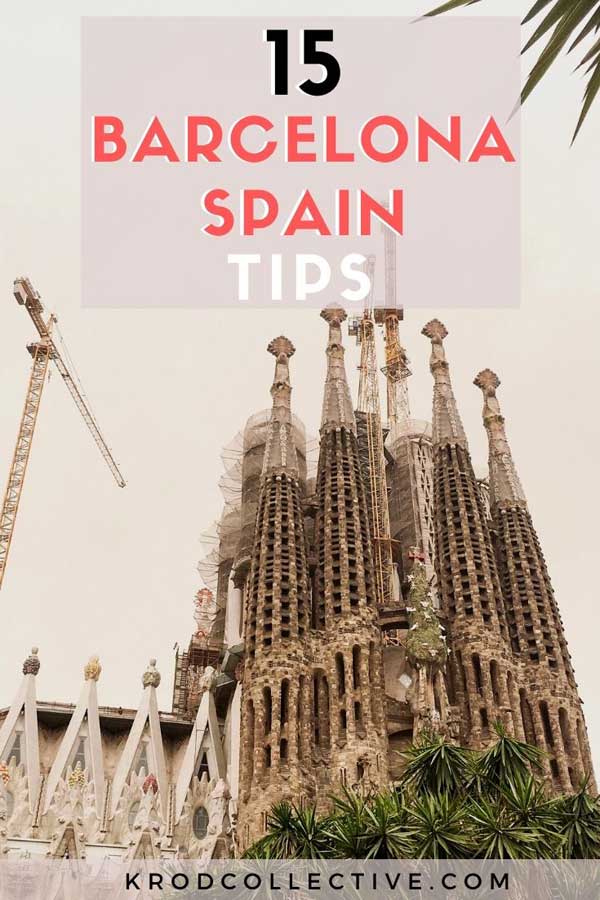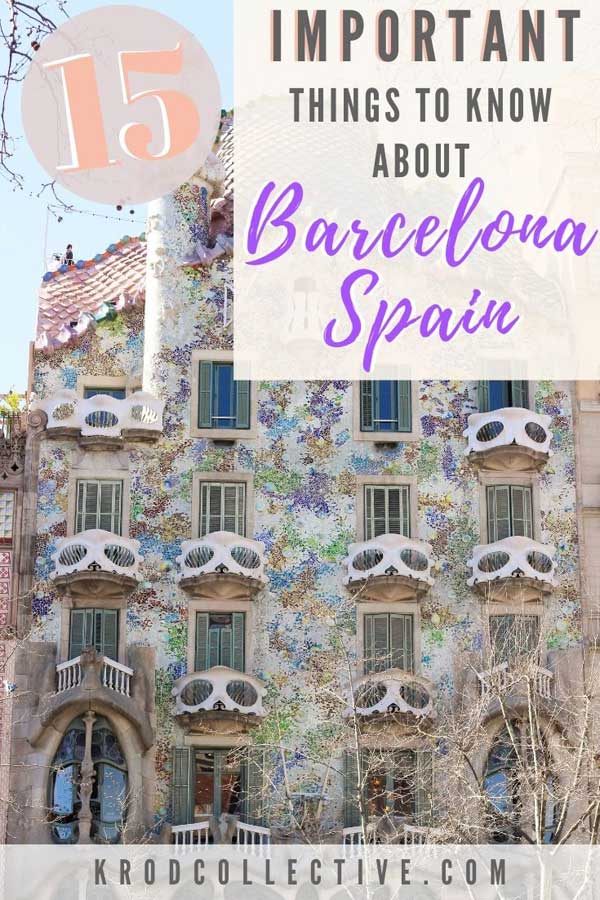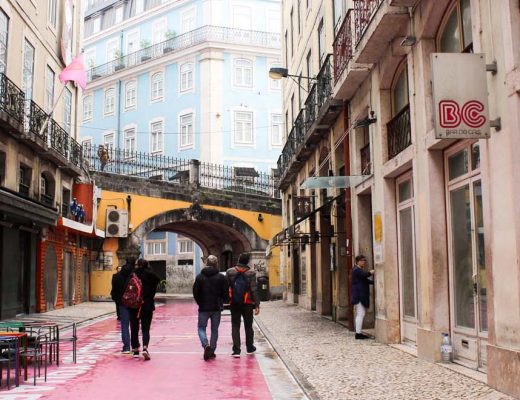Hey girl! This post may contain affiliate links. This means that if you make a purchase through one of them, I will receive a small commission. At no extra cost to you! This helps me to keep my site free and running. I am so incredibly grateful for your support. For more info, check out my Privacy Policy.
Barcelona, Spain is one of those cities that will have you smitten. The kind of smitten where you gush all day about it, try to figure out how to move there part-time, or determine yourself to make it a repeat destination on your travel map. Barcelona is truly a stunner and anyone who has a passport should aim for a stamp.
The beautiful Catalan city has so much to offer from beaches and mountains to impressive architecture and scrumptious food. It’s no wonder it is one of the world’s most popular travel destinations. As someone who lived there for three years, I can tell you that Barcelona may be marvelous and all—but it’s an easy place to get wrong. It’s a unique city and one of those places where you want to come having done the appropriate research.
I spent years watching visitors be mistaken by the culture or fooled by pickpockets and I don’t want to see the same happen to you. If you want an effortless Barcelona trip, there are some Barcelona travel tips you should know and I’m here to help.
Use this guide to assist you in preparing for your trip to Barcelona so you can spend less time avoiding headaches and making cringe-worthy mistakes and more time gobbling down delicious pan con tomate. Enjoy!

Hey Lady! Looking for more Barcelona travel tips? Check out these posts:
- What to do in Barcelona? 33 Fun Things to do in Barcelona
- Barcelona Day Trips: The Best Day Trips from Barcelona
- The Best Tapas Bars in Barcelona
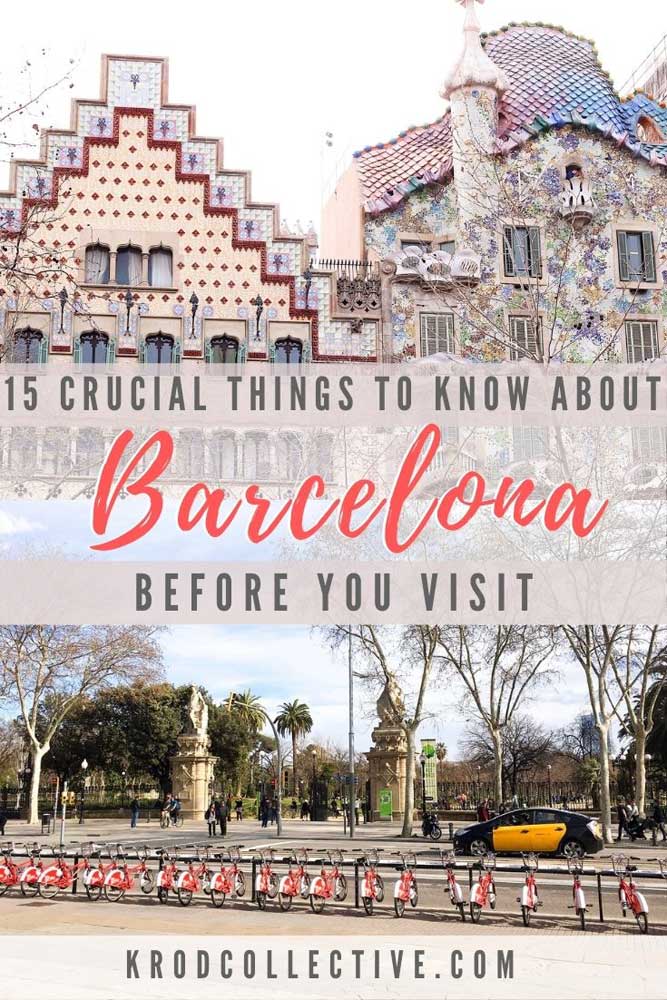
Table of Contents
Barcelona is in Catalonia
Barcelona may be a city in Spain, but it is also Catalonia’s capital. The important thing to know is that Spain is divided into 17 autonomous communities, kind of like America’s 50 states. Each community has its own executive and legislative powers and its own distinct holidays, customs, and traditions. One of the largest of these communities is Catalonia. There are different cities in this region like Tarragona, Girona, Mataró, and Badalona…but the largest and the capital is Barcelona.
Catalonia is culturally distinct from Spain and Barcelona is not really the city to get your Flamenco on. Sure, you can find it there, but it’s kind of like visiting Boston with the hopes of having the finest biscuits and gravy, sweet tea, and country line show that money can buy. In fact, flamenco isn’t even Catalan it’s traditionally Andalusian. To make the most out of a trip to Barcelona, I would suggest checking out some Catalan traditions.
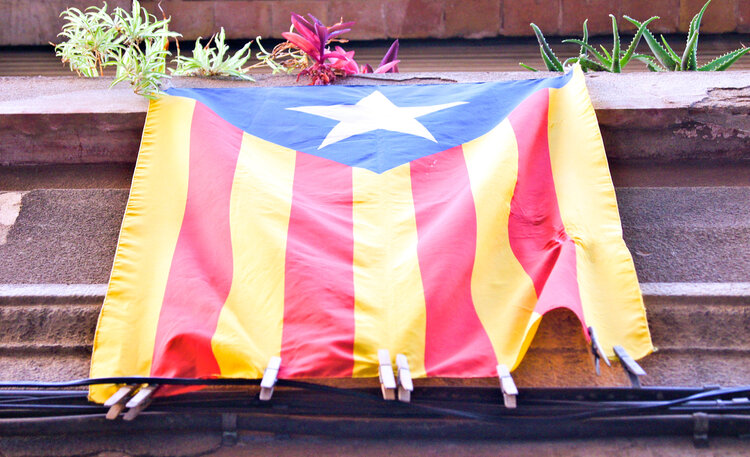
There are Two Official Languages
Spanish is the official language in every community in Spain, but it is the co-official language in six communities: Catalonia, Valencia, The Balearic Islands (Formentera, Minorca, Mallorca, and Ibiza), Galicia, The Basque Country, and Navarra. Therefore in Barcelona, the official languages are both Spanish AND Catalan. So while you’re living your best vacation life in Barcelona, you’ll hear both languages spoken and you may notice street signs and warnings written in both languages as well.
Most Catalans are multilingual and can speak several languages including Catalan, Spanish, and English. It’s very easy to get by in Barcelona with just English. However, there are some local, smaller establishments that prefer to use only Catalan or Spanish so brush up on that High School Spanish. As a bonus, if you attempt a little Catalan, you might just be rewarded with cheers, smiles, and appreciation.
Barcelona Has a Peak Season
Barcelona is the most visited city in Spain, so crowds are to be expected. One of the more helpful Barcelona travel tips is that the peak season is May to early September. If you’re not interested in melting your face off, fighting through massive crowds, or spending an astronomical amount on accommodation, I would avoid July and August. August is a vacation month and many locals leave during that month to go traveling or spend time on the coast. My personal favorite times in Barcelona are March through May, September and October, and the holiday season. The summer is often humid and sweltering even after the sun goes down, so prepare yourself and pack appropriately.
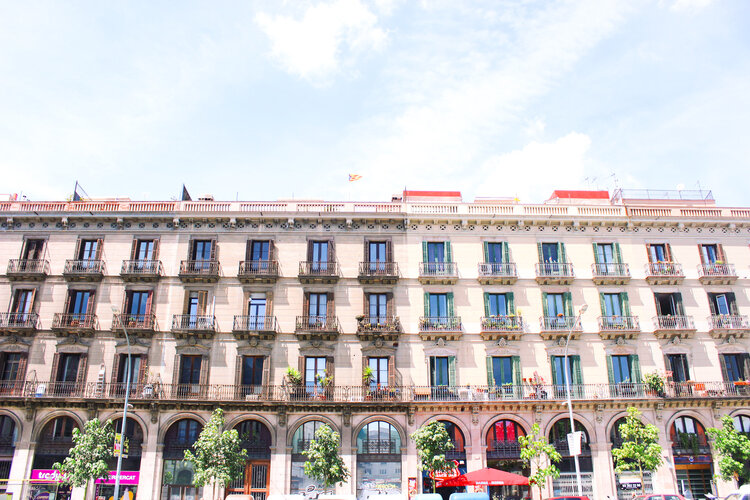
Barcelona’s Airport Has Two Terminals
Barcelona Prat’s airport has two terminals: Terminal 1 (T1) and Terminal 2 (T2). This is often a small detail that travelers tend to overlook and end up at the wrong terminal when departing. Make sure to check your arrival and departure terminals, especially if you’re flying with a budget airline. This will affect the type of transportation you use. The two terminals are about 4km apart (roughly 2 1/2 miles). There are free shuttle buses that can take you from one to the other. The bus is bright green and runs every seven minutes, 24/7. The journey takes about 10 minutes.
The City Center is Easy to Get to From the Airport
When you arrive in Barcelona your first instinct may be to grab a cab to get to the city center, especially if you’re traveling solo. But I’d say don’t do it, sis. One of the Barcelona travel tips that is good to know is that the city center is really easy to get to using public transportation. Between the train, the metro, and the bus there are several, cheaper options (than a taxi) to get to where you’re staying. Check out the detailed options below.
Metro
You can get to and from the airport to the city center using the metro by taking the yellow, L9 train. The metro goes to both terminals however, you cannot use a T-10 or regular metro ticket. You need a special metro ticket called a ‘billete aeroporto’ ticket that costs €4.60. Once at the L9 Sud station, you must then take a train, either an express or a regular train, to get to the airport.
RENFE Train
The train will take you to and from T2 at the airport and runs every 30 minutes from 6:00 am to 11:00 pm. The ride takes about 25 minutes and you can use your T-10 or simply buy a single ticket for €4.20. You can catch this train at the following stations: Clot, Passieg de Gracia, and Barcelona Sants which all have connections to the metro as well. If you need to get to T1, allow yourself time to take the free shuttle bus.
AeroBus
The Aerobus is the most popular and fastest way to get to the airport. It’s an express bus that takes you to both terminal 1 and 2 and runs every 5 minutes. There is tons of luggage space and the bus makes minimal stops. (Double check the outside of the bus to make sure you’re going to the right terminal. If you are unsure, ask the driver.) The service costs €5.90 for a single ticket or €10.20 for a return ticket and must be used within 15 days. You can catch the Aerobus at Plaza Catalunya, Plaza Espanya, and Plaza Universitat. For additional stops and the exact route check out this link.
City Airport Bus (TMB)
Bus 46 travels daily to both terminals of the Barcelona Prat airport. It makes more stops than the Aerobus, but it’s cheaper and you can use your T-10 metro ticket. You can catch the Airport Bus at Plaza Espanya. At night, take the N17 or N16 Airport Night Buses that operate on the same routes.
Taxi
There are plenty of taxis in front of both terminals. You may be asked to wait in line, but the line moves quickly. The drive takes about 20-30 minutes depending on the traffic and costs around €30-€35. Official Barcelona taxis are marked clearly and are black and yellow as seen in the photo above.
The Airport Has Luggage Storage
Like many international airports, Barcelona Prat Airport has a luggage storage facility at Terminal 1 and 2 from a company called Excess Baggage. Look for signs that say “CONSIGNA baggage storage” and you’ll find it. You can book space in advance at no cost. This is one of the greatest Barcelona travel tips if you have a lot of luggage or have a layover in the city and don’t want to lug your stuff around the city. The best part is, prices are by the bag and not by weight. Check out their website for prices.
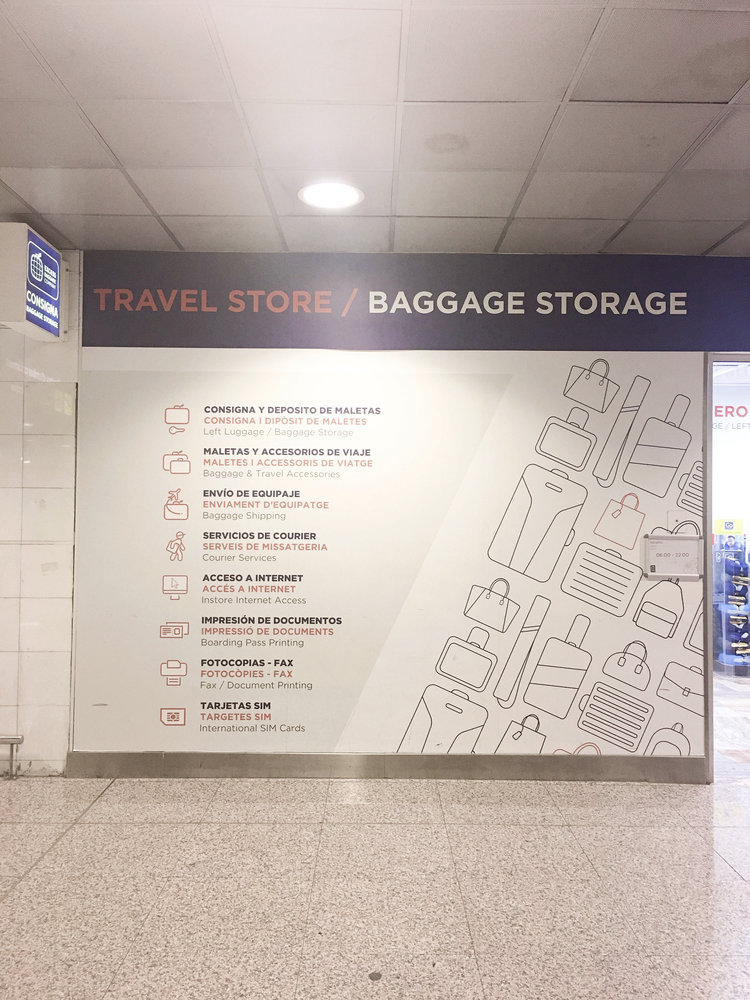
It’s Easy to Get Around Barcelona
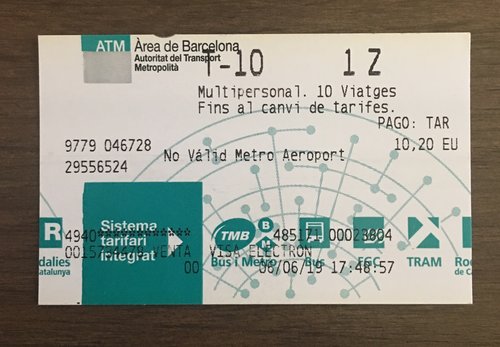
Taking a taxi everywhere may be necessary for many cities but Barcelona is not one of them. In an effort to reduce air pollution and give space back to pedestrians, the city implemented something called superblocks in 2016. They are an urban planning concept where roads form a 400 X 400-meter polygon that makes the most of public areas. This makes Barcelona is a very walkable city with wide sidewalks, plus public transportation is on point.
One of the best Barcelona travel tips is that the metro is super easy and one of the fastest ways to get around. Buying a T-10 metro card is the most cost-effective as a single ticket is €2.20 and a T-10 is €10.20. You could also get the Barcelona Card for 3 to 5 days of unlimited travel. If you will only be using the metro for one day, opt for the T-dia. It is a day metro card with unlimited journeys for €8.60. You can use the Metro tickets for busses as well. For more info on unlimited transportation around Barcelona, check here.
Pro Tip:
The Barcelona Metro does not run 24/7. Monday to Thursday it runs from 5:00 am to Midnight. On Fridays, it runs from 5:00 am to 2:00 am and on Saturdays, it runs all day and night. Sundays it closes at midnight.
On these holidays it also runs 24/7:
January 9th
June 24th
September 24th
If you’re traveling late at night, don’t worry, night buses are always available and run all night in lieu of the metro. Just check Google Maps before you head out to know which bus to catch.
Pro Tip: You must flag busses down in Barcelona or they won’t stop. It’s easy to do, just stick your hand out that way the driver knows to stop.
There are Cheap Places to Stay
One of the best things about Barcelona is that unlike other major cities it’s extremely affordable. Eighth on this list of Barcelona travel tips is that staying in the city won’t cost you an arm and a leg. There are plenty of choices for accommodation from charming Airbnbs to fun, hip hostels, and comfortable hotels. Check out my picks below of some nicer hostel and hotel options for where to say in Barcelona.
Casa Gracia
Casa Gracia Hostel on Passeig de Gracia is a great option. It’s stylish and chic plus it’s in a great location in Gracia. Shared rooms are available and there’s a terrace and 24-hour front desk. It’s also a 4-minute walk from Gaudi’s La Pedrera and a 10-minute walk from Casa Batlló. This neighborhood is one of my favorites. It’s spacious and offers a little relief from the hustle and bustle of the city.
Casa Bonay
Casa Bonay in Example is a little pricier but this boutique hotel is in a fantastic location and is a 10-minute walk from Plaza Catalunya. There are also cool events like live DJs and film screenings. There is a gorgeous rooftop terrace and free bikes and yoga classes. Plus one of Barcelona’s best coffee shops Satan’s Coffee Corner is located right downstairs.
Chic & Basic Boutique Hotel
Chic & Basic Boutique Hotel is a stylish boutique hotel in Born that’s affordable and smack dab in the middle of Barcelona’s amazing attractions. There are tons of bars and restaurants nearby and it’s steps away from La Ciutadella Park and Arc de Triomf. The rooms are small but airy with glass showers in the center. Workout at the gym and spend the day at The Picasso Museum which is only 4 minutes away.

Dinner is Late
Spain marches to the beat of its own drum and the pace of life in Barcelona may not be what you are used to. Locals like to take life slowly and value quality time. Meals tend to be later. Lunch is normally around 1:30 pm – 3:00 pm and dinner is normally around 8:30 pm to 10:00 pm. If you’re going out to dinner, it could be even later and some restaurants may not even open until 8:00 pm. If you’re used to eating early, make sure to grab a snack or try some tapas to hold you over in the early evening before that “hanger” kicks in.
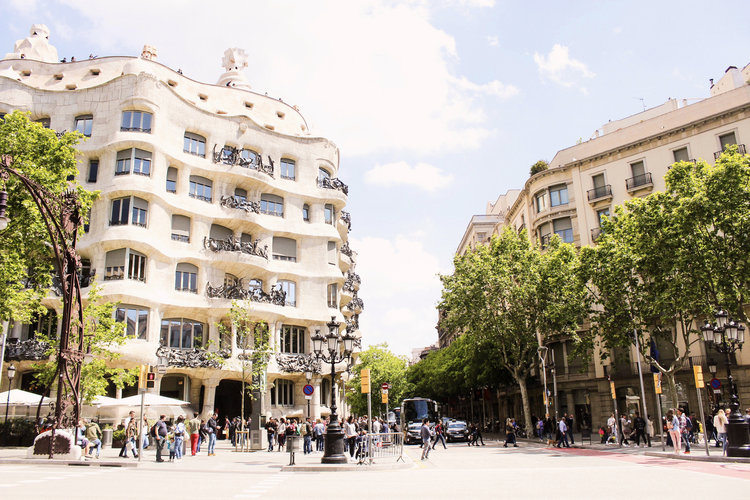
Tipping in Barcelona Isn’t Customary
If you’re from North America like me, tipping is so ingrained in our culture it’s almost second nature to add 15-20% to services you may receive abroad. But to save you some stress, one of the Barcelona travel tips you should know is that tipping isn’t customary. It’s certainly welcome but it is not expected. You may, however, want to tip your tour guide if you see fit. And you can leave a 5% tip at restaurants if you received exceptional service.

Barcelona is a Great Place to Eat Catalan Food
Not trying Catalan food while in Catalonia would be like not enjoying french bread and cheese in France or delicious slices of hot pizza in New York City. Barcelona is a fantastic place to try traditional Catalan food. The food from this region is different from what you may experience in other parts of the country. There’s no shortage of yummy choices.
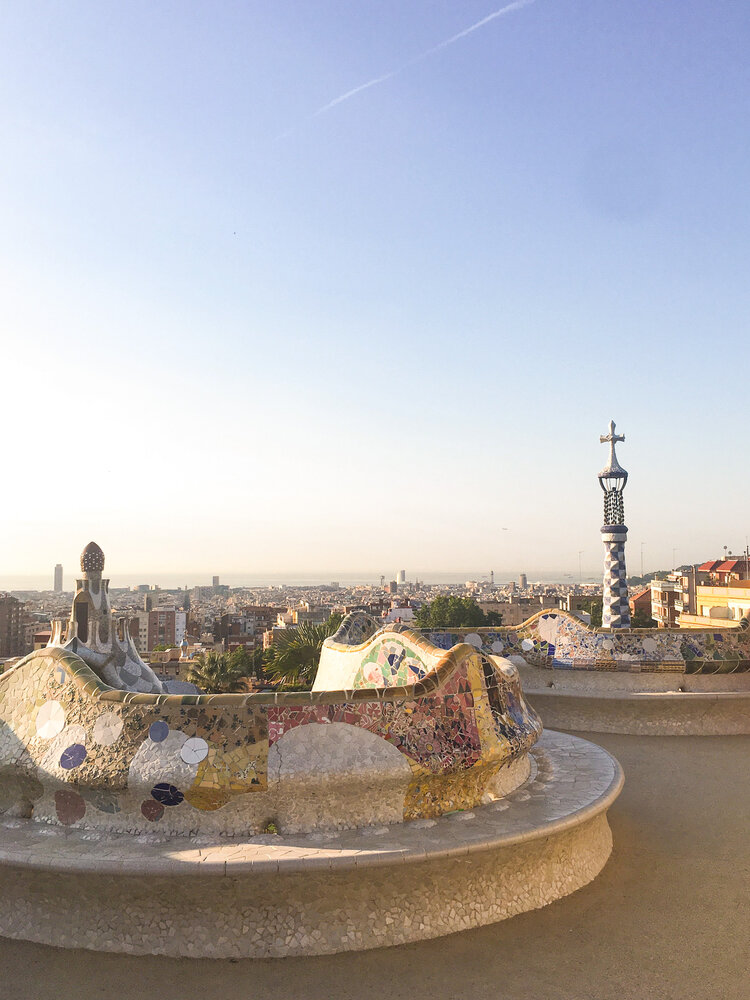
Book Attractions in Advance
Because Barcelona is a tourist hotspot pretty much year-round. If you have any plans to be mesmerized by the Sagrada Família or make your way through the magical Park Guell, you NEED to book tickets in advance. Museum and attraction tickets often sell out pretty quickly leaving limited spots. Booking in advance or buying bundles will save you time from waiting in long lines, plus they avoid the disappointment of not seeing the attractions that you want.

Barcelona Bundles and Tourist Passes:
There are a crap ton of fantastic museums and attractions in Barcelona. You’re going to want to see as much as you can. Trust me. But getting from place to place can be exhausting and money-draining. One of the best ways to save money and organize your attractions beforehand is with bundles, combo cards, and tourist passes. Some of these passes can gain you entry to various attractions for one flat fee. Here are a few passes that you might be interested in:
The Barcelona Pass
The Barcelona Pass is a multi-attraction card that covers all of the most popular Barcelona attractions like Gaudí’s Casa Batlló, FC Barcelona Experience, and the Barcelona Zoo. With this card, you can enjoy access to over 20 top Barcelona attractions and tours with free cancellation up to 24 hours in advance.
The Barcelona Card
The Barcelona Card is a great way to get around the city and see a lot while you’re doing it. With this nifty tourist pass, you can get 3 to 5 days of UNLIMITED travel with public transportation (metro, bus, railway, and tram), including transportation from the airport with the RENFE airport train. Plus Flat-rate admission or skip the line for some of Barcelona’s best museums like the Picasso Museum, the MACBA, and more.
The Barcelona Express Card
The Barcelona Express Card is also another great option, especially for those with less time. Similar to the Barcelona Card, you can get 2 days of museum discounts and unlimited public transportation for €23.00.
Pickpocketing is Big in Barcelona
This is one of the most important Barcelona travel tips. For this one you’re gonna wanna lean in close, real close, and hear me loud and clear. BARCELONA IS PICKPOCKETING CENTRAL! Yes, I’m yelling at you. Barcelona is known for its extraordinary landscapes and scrumptious food that is so good it melts in your mouth. However, it’s also known for being the pickpocketing capital of Europe. These pickpockets are usually young teens or professionals. Always make sure to keep your belongings on you at all times and don’t make yourself a target by wearing flashy jewelry or accessories.
When you’re on the metro, try to have a cross-body bag or hold your stuff in front of you. Don’t leave cell phones on tables, especially if you are outside, this includes the beach. If you’re going to the beach alone, bring as little stuff as you can or invest in waterproof cases (like this one here or here) that you can take into the water with you. Don’t stop in the middle of the street to check Google Maps because they will come and snatch your phone out of your hands.
I hope you can forgive me for yelling at you. But I can’t tell you how many people I know who have come back to their hotel and went to send a text, only to find that their cellphone was stolen from them without them even knowing.
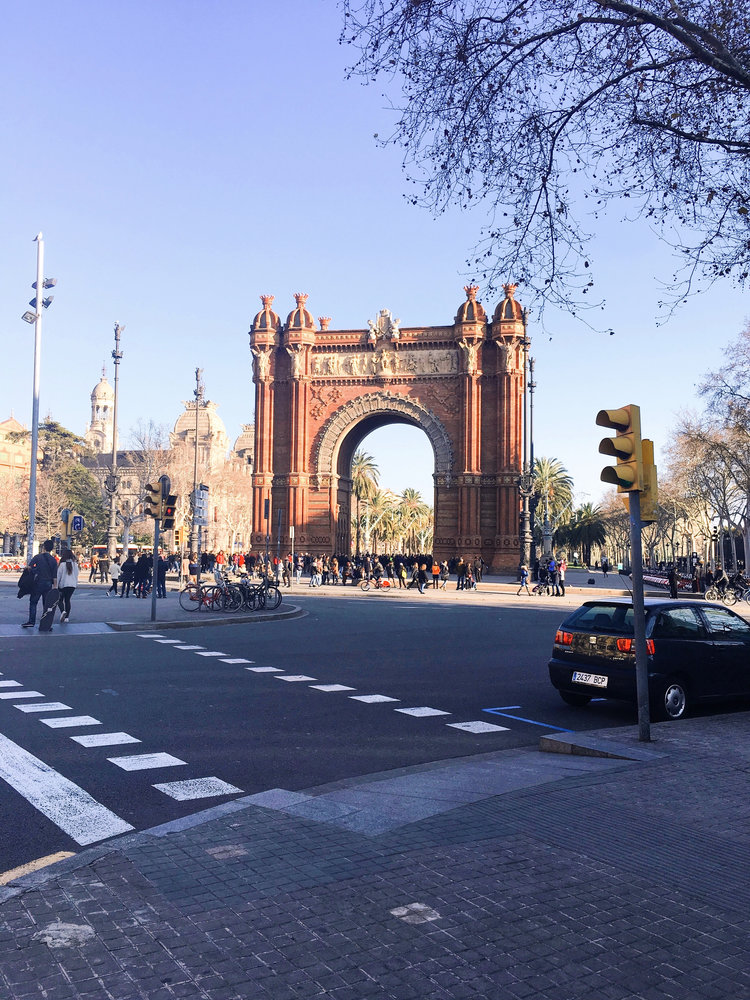
Exploring Outside of Barcelona is Worth it
The east coast of Spain and the rest of Catalonia is filled to the brim with history, culture, beauty, and adventure. If you have the time, it is so worth exploring beyond Barcelona. Make your way down to Valencia and eat as much paella as you can or explore the outstanding beaches and coves in Costa Brava and let cava dribble down your chin. Go see Salvador Dalí’s hometown of Figures and meander through the Dalí museum. If you like adventure, you can take the train and spend the day at Montserrat mountain, a multi-peaked mountain in Catalonia.

Voltage is 230 V in Barcelona
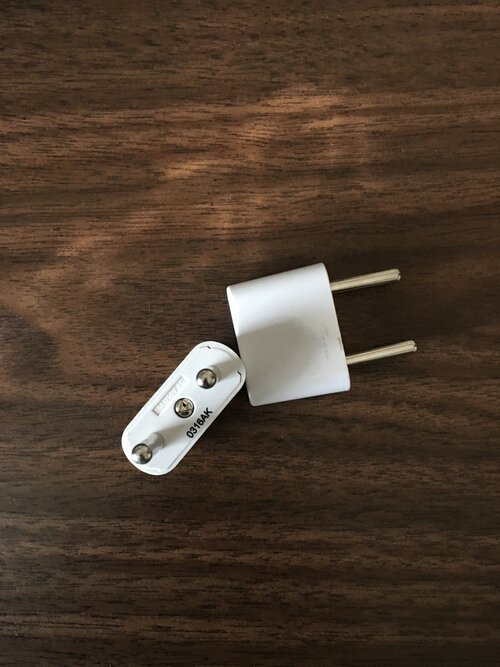
I know what it’s like to triple check and make sure you’ve packed everything including your passport but when you get to your destination and go to charge your phone, you discover that the electrical system is different. This is a simple, yet often overlooked, detail that you’ll need to know before you visit Barcelona. Spain’s voltage is 230 V with type F sockets, this means you’ll need an adapter or converter. You can easily find a wide variety of adapters and converters online or at any travel or hardware store.
Do you have any great Barcelona travel tips? Share them in the comments below!
